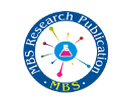Past Issue | Volume | Volume 8,Issue 12,Dec,2022
![]() Determination of phenolic compounds with recent development in Laccase Biosensor
Determination of phenolic compounds with recent development in Laccase Biosensor
Abstract:-
Laccase belongs to the multi copper oxidase family that catalysis the one electron oxidation of phenolic compounds. For catalysis of phenolic compounds it requires oxygen as co-substrate and it yields water as by-product. Laccase is distributed in fungi, bacteria and higher plants and also reported in lichens and sponges. Laccase was first discovered in Japanese lacquer toxicodendron vernicifera (Rhus vernicifera) in 1883. Laacase contains three type of copper atoms in which T1and T 2 is paramagnetic and T 3 is diamagnetic. T1is the first active site for catalysis (substrate oxidation site) and T2and T3 forms a trinuclear cluster where molecular oxygen is reduced to water. Many methods are used for immobilization of laccase such as direct adsorption, physical entrapment, conjugation and covalent attachment. Laccase enzyme is used for construction of biosensors for determination of various compounds such as tartrazine, phenols in wastewater, catechol, detection of Bisphenol A, polyphenol index in wine, xenobiotics.
HULSUR SUSHILA1 , DR. RAJENDRA PRASHAD SHARMA2
Abstract:-
The most widely used device for interpersonal communication is now the cell phone. Although they are increasingly more of an apparel trend than a status signal, mobile phones have also led to an implicit societal reliance. Young adults and teenage boys are less inclined to use their phones for texting, initiating calls, browsing the internet, or playing mobile games. Youth and youngsters that engage in feelings behavior are also more likely to want to experiment with associations, norms, even duties. Recreation, knowledge, and interaction with others are all facilitated by smartphones. A cross-sectional study involved 400 schoolchildren, from a few chosen schools in Uttar Pradesh, India. Using the simple random sampling method, Participants reported the purpose of smartphone usage and the duration spent on each activity were utilized to analyze the behavioral changes brought about by the usage of mobile phones. Survey distribution was used to track academic success. Descriptive statistics were employed to analyze the collected data. The findings highlight the impact of mobile phone policies on students' activities during breaks and underscore the challenge of completely eliminating mobile phone usage during these times. The study differentiates between primary (7–11 years old) and secondary tier (12–18 years old) students in terms of break time activities. Notably, younger students engage more in traditional activities, such as reading books, compared to secondary tier students. Awareness campaigns and educational programs can be designed to inform students about the potential health risks associated with excessive cell phone use.
CHILUMULA CHAITANYA1, DR. RAJENDRA PRASHAD SHARMA2
Abstract:-
Anaemia is a significant "risk factor" during pregnancy and is linked to an increased risk of poor infant weight and maternal mortality. The present study aimed to identify thecultural factors that contribute to anemia in pregnant women. In this study cultural factors refer to cooking practices, food habits, personal habits, health practices, and health problems over six months before pregnancy.
Material and method: The researcher used an exploratory strategy in the current study. In order to comprehend the current issue better. In this study, 700 pregnant women, aged between 14-48 years,
Need PHD Research Writing Help?

